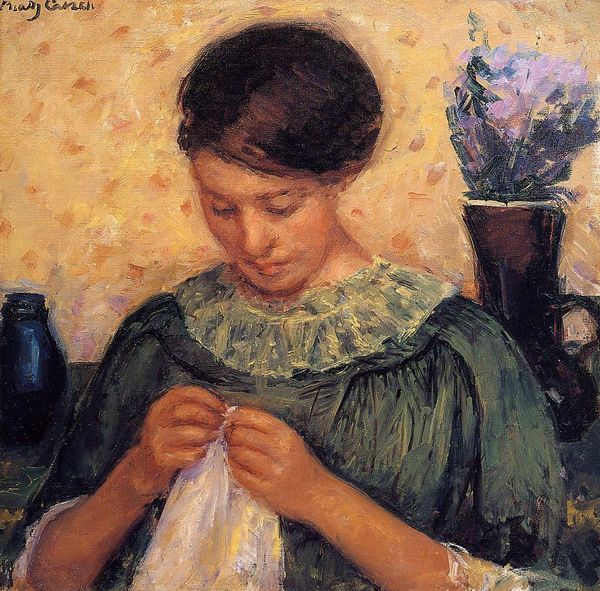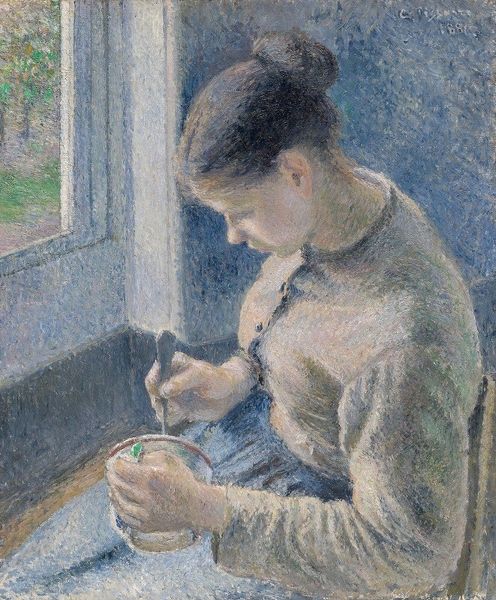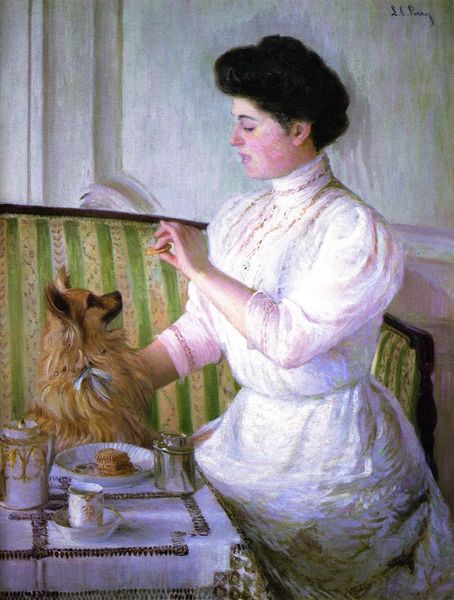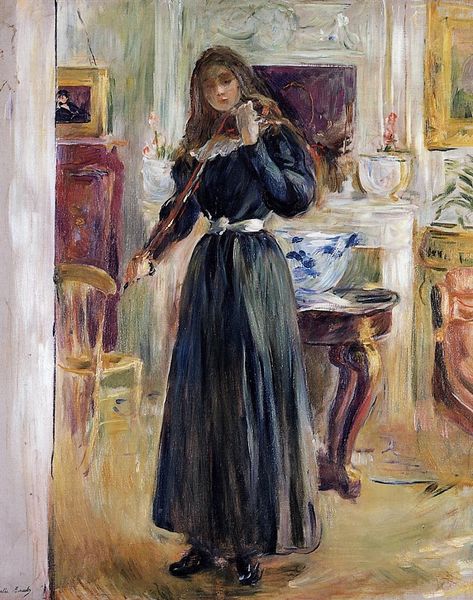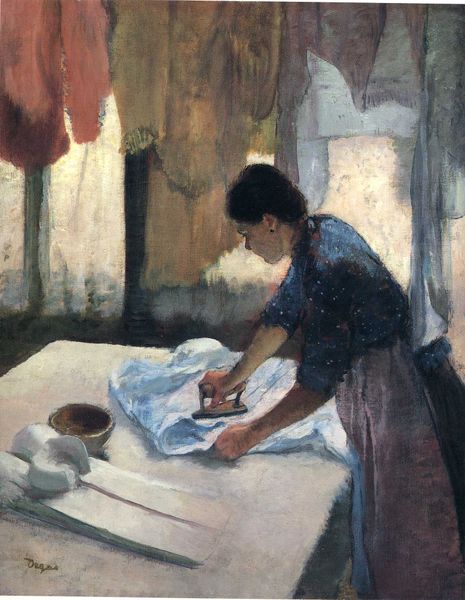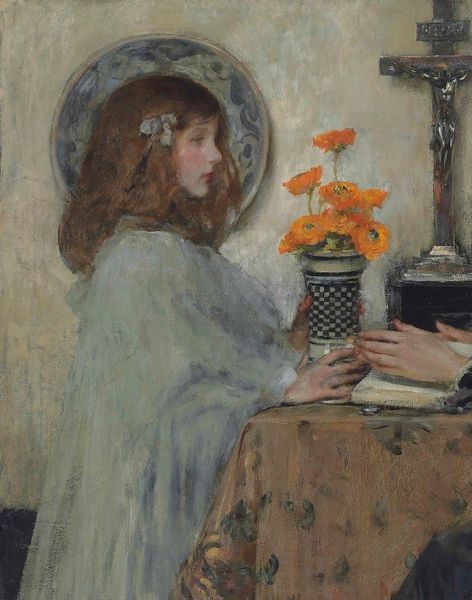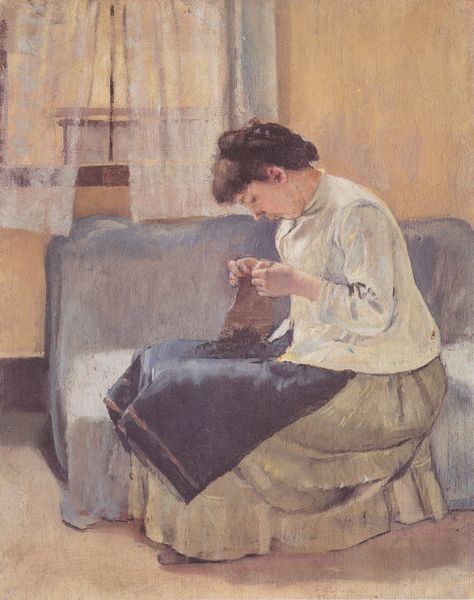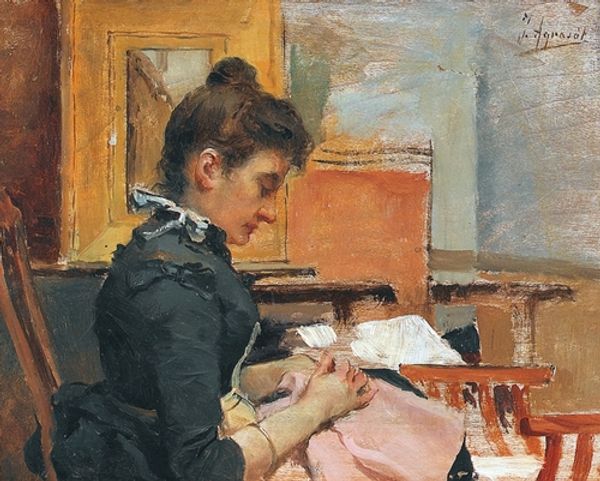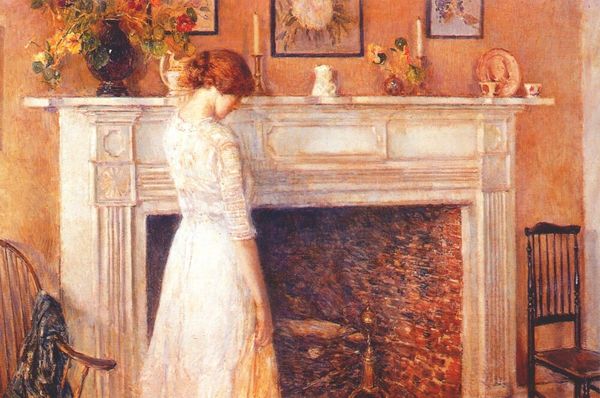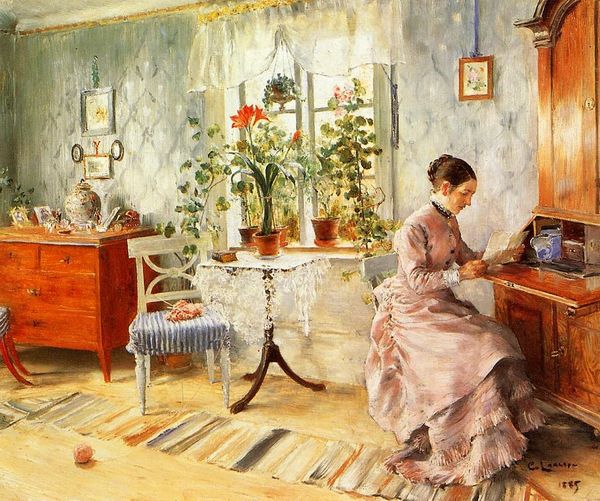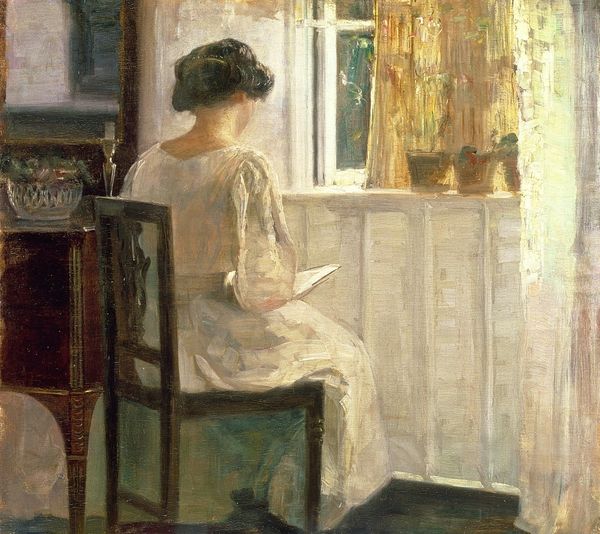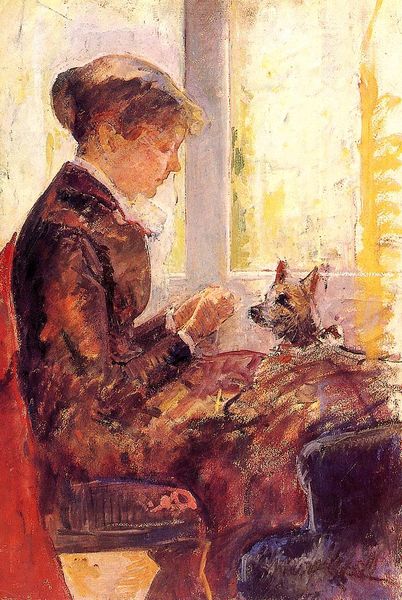
Copyright: Public domain
Editor: We’re looking at "Presser," an oil painting by Konstantin Makovsky, dating back to 1900. It depicts a woman ironing, seemingly lost in thought. There's a quiet intimacy to the scene, a sense of the everyday elevated to something more. How do you interpret this work, especially given its social context? Curator: This piece speaks volumes about the socio-economic conditions and the representation of women in early 20th-century art. It's not just a simple portrayal of domestic labor; Makovsky's "Presser" challenges the traditional depictions of women prevalent at the time. Note the gaze; it's internal, suggesting intellectual life beyond her chores. Editor: So, it's a subversion, maybe? What elements support that? Curator: Precisely. Consider the context: Realism was dominant, but Makovsky brings in impressionistic elements. The brushstrokes are looser, the colors less constrained. It elevates this 'genre scene' beyond mere documentation. The way the figure dominates the canvas places an emphasis on her individual experience. Don’t you agree that subverts expectations for how working-class women were shown at the time? Editor: Absolutely, the composition directs your attention right to her. Also, thinking about how galleries decide what's worth showing and selling… was Makovsky deliberately making a statement, challenging the status quo, or was there another angle at play? Curator: The question of authorial intent is always tricky, but the socio-political impact is clear. The very act of showcasing the working class in art was a political statement, forcing the audience to confront realities often ignored. This type of art plays a significant public role in shaping the viewer's cultural understanding. Editor: It’s interesting to consider the role of art as a conversation starter about society's hidden labor. Thanks for spotlighting that; I'm seeing so much more than just a woman ironing now! Curator: Indeed. It prompts reflection on how we represent different classes of people and, also, on the institutions and galleries themselves. Hopefully you will take that awareness with you.
Comments
No comments
Be the first to comment and join the conversation on the ultimate creative platform.
